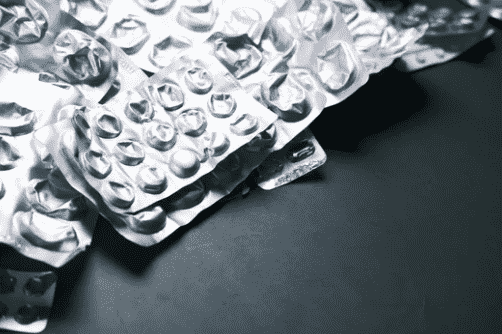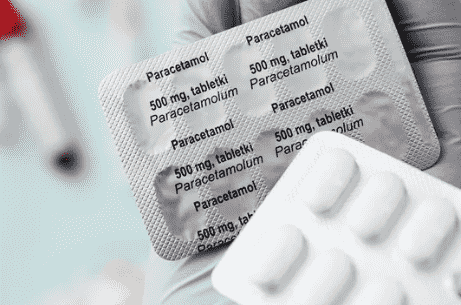The Ultimate Guide to Blister Packaging Problems and Solutions
Blister packaging is a popular form of goods packing. This type mainly consists of a clear plastic film and a backing board. It is mainly made through thermoforming. When the plastic film, like PVC and PET, is heated and softened, it could be shaped into different cavities. Then the shape is fixed through cooling. The backing is usually made of cardboard, aluminum foil, or plastic. After placing the product inside, the blister is sealed with the backing by various techniques. They include heat sealing, gluing, etc.
Blister packaging is widely used in pharmaceuticals, food, electronics, and daily goods. This is mainly because it provides strong protection. Blister packing protects products from mechanical damage, moisture, and contamination. Moreover, the clear blister allows the product to be displayed clearly to consumers. So they can see the medicines in detail.
You may encounter many problems in the blister packaging process. This article helps you understand their causes and know how to optimize.
Four Common Problems of Blister Packing
Seal Issues

Seal problems are common in blister packaging. A bad seal can cause contamination or leaks, especially in the pharmaceutical and food industries. This affects product quality and safety. There are many reasons for bad seals. Most of them are caused by material choice and temperature control.
Different materials need different heat sealing methods. Some may need special treatment to seal well. Also, it is important to control the temperature during sealing. Too high or too low temperatures can ruin the seal.
To fix this problem, you must choose the right materials. Consider their heat sealing range, adhesion, and compatibility with the product. In addition, optimize the temperature and pressure during sealing to ensure good conditions for heat sealing.
Printing Issues

Clear printing is essential because it ensures clear product instructions and warnings. However, many people face this problems because of ink. Unsuitable ink can cause spots, smudges, uneven colors, and blurry patterns. There are four possible reasons for this.
- The ink and the backing material repel each other. If they mix well, the ink sticks firmly to the backing material and stays stable under normal use. Or it may appear peeling, fading, or other bad reactions.
- Ink contains components that affect adhesion. These can be certain chemicals or impurities. They reduce the ink's ability to stick, making the print easy to peel off or unstable.
- The ink's pH level is not suitable. Different backing materials like cardboard, foil, or plastic need different pH levels. If you always use the same ink to print on different materials, problems will arise.
- Viscosity issues. Viscosity is the ink's flow and thickness. If it's too low or too high, it will negatively affect print quality.
Therefore, when making blister packaging, consider the ink carefully. Adjust the ink formula if needed to ensure good performance and stability.
Contaminants

During packaging, static electricity can build up from friction between materials. It attracts dust and dirt to the film. Then they get sealed inside the blister packaging as permanent contaminants. As the process finishes and the plastic cools, static increases further. It causes more dirt issues. For example, an operator's hair or skin can get stuck inside the blister.
You can avoid these problems by controlling static electricity. First, check the materials you are using. Use static removal tools like a static brush to get rid of static on the material's surface. You can also choose packaging materials with anti-static properties. It helps reduce static's impact on the product and the packaging process.
Packaging Breakage

If blister packaging breaks right after sealing, you may use poor-quality plastic film or cardboard. Because of lacking durability and tear resistance, they easily get damaged from friction or stretching. Moreover, poor-quality materials are often inconsistent in thickness and uniformity. This makes the packaging more likely to break.
This problem also relates to pressure. If the machine doesn't distribute pressure evenly, some areas will form local breakage.
Fix Blister Packing Machine Troubles
Besides the issues above, sometimes machine problems also cause blister packaging issues. So you should know some basic problems and fix them by yourself. Take iPharMachine DPP-140 automatic blister packaging machine for example. Here are some practical troubleshooting tips.
|
Fault |
Cause |
Solution |
|
There is some perforation in the blister. |
The forming temperature is too high. |
Decrease the temperature. |
|
The forming is incomplete. |
The interstice between the forming mold and the heating plate is too large. |
Adjust the distance to be 2~3 mm. |
|
|
The upper mold and the lower mold are not parallel. |
Adjust the cap nuts of the pillar to make them parallel. |
|
|
The O-type sealing ring is damaged. |
Replace the sealing ring. |
|
|
The air input hole or the output hole is jammed. |
Use steel pin to dredge it. |
|
|
Pressure of compressed air is not proper. |
he pressure to be about 0.4~0.6 Pa |
|
Transverse deviation causes that the blister enters the heat-sealing. |
The stroke is adjusted wrongly. |
Reset it on the touch screen. |
|
Longitudinal deviation causes that the blister enters the heat-sealing mold bores incorrectly. |
The PVC quality is not good. |
Change the PVC.
|
These are the most common problems. If you face any issues you can't solve, you can contact us. We have a professional after-sales and technical team. We are always ready to help you. We can make custom solutions for your machine to ensure smooth operations. Feel free to reach us anytime by email or phone.
How to Avoid Blister Packaging Problems?
To ensure efficiency and safety, you can take some steps to minimize risks during the packaging process.
Choose Good Quality Materials
Materials play an important role in making good blister packaging. High-quality materials can store medicine effectively. You should choose materials based on the product's and manufacturing needs. For example, if a company makes medicine that is sensitive to humidity, they must choose ones with good moisture barriers.
Also, make sure the packaging materials are compatible with the medicine. It helps prevent chemical reactions that could degrade the medicine.
Maintain Equipment
A well-running machine needs regular maintenance and calibration. This ensures it works efficiently and effectively. Monthly check-ups and cleaning are essential. They help you find and fix problems early. You can keep a log to record each maintenance and repair for future reference.
Operators Training
It is necessary to train your staff to have a comprehensive knowledge of machine operation. Besides basic operations, they must understand safety procedures and how to troubleshoot. This helps operators spot and fix potential issues early, preventing bigger problems.
Want to learn more about blister packaging machine? Check out our other related posts!
- The Top 7 Reasons Why Blister Packaging Is Used
- A Beginner's Guide to Thermoforming Blister Packaging Machines
- Blister Packaging 101: Understanding Materials and Packaging Options
Leave your comment
Also Offers


Containment Automatic Capsule Filling Machine SFK-703

Fully Automatic Dosator Capsule Filling Machine CZ-40

Our Team
As an expert in the pharmaceutical and pharmaceutical packaging industry, iPharMachine has provided solutions for hundreds of pharmaceutical and health product manufacturers for 17 years. By visiting customers, we get good reviews from our customers.
- info@ipharmachine.com
- English Español Deutsche








